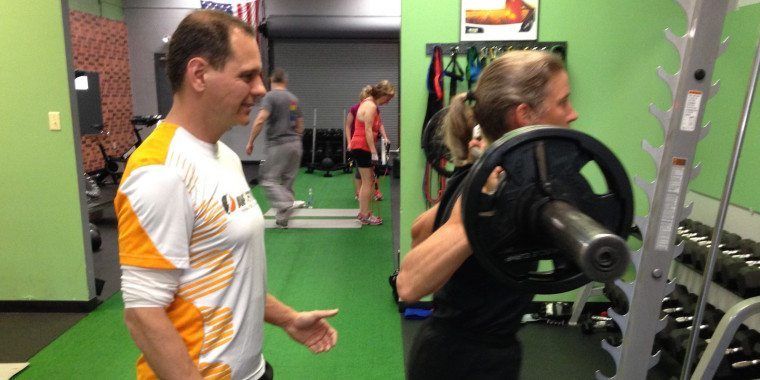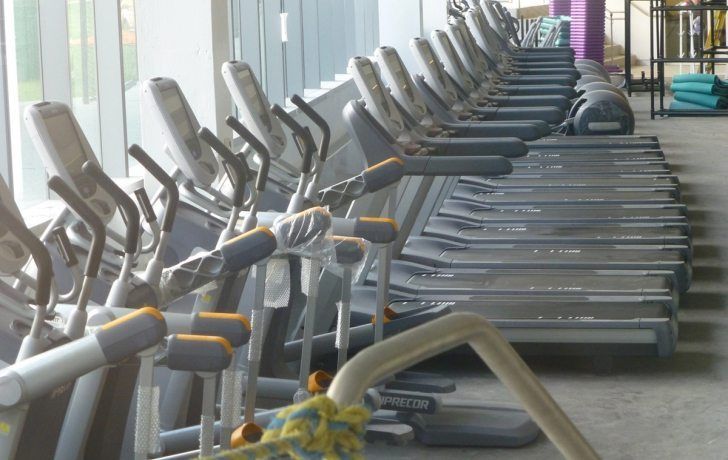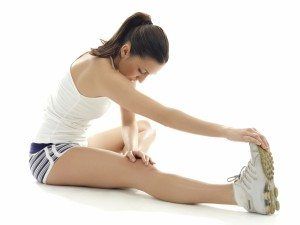There are several benefits to incorporating stretching into your workout routine and the American College of Sports Medicine recommends stretching each of the major muscle groups at least two times a week for 60 seconds per exercise.
In addition, regular stretching can help keep your hips and hamstrings flexible as you age, and can also help if you are experiencing problems with your posture.
If you are experiencing back pain from sitting at work all day, exercise physiologist Mike Bracko recommends doing the Standing Cat-Camel as a work-related back stretch (according to an article at webmd.com).
Here’s how:
- Stand with your feet shoulder-width apart and knees bent slightly.
- Lean forward, placing your hands just above your knees.
- Round your back so that your chest is closed and your shoulders are curved forward.
- Then arch your back so that your chest opens and your shoulders roll back.
- Repeat several times.
If your job keeps you in the same position all day, Bracko suggests doing 2-minute stretch breaks to reverse that posture at least every hour.
Do You Need to Hold a Stretch to Get the Benefit?
Stretching a muscle to the full extent of your ability and holding it for 15 to 30 seconds is what’s called a static stretch, and there’s no harm in stretching that way as long you don’t stretch until it hurts.
But studies suggest a dynamic stretch is just as effective, and sometimes better, especially before your workout.
A dynamic stretch, like the Standing Cat-Camel, moves a muscle group fluidly through an entire range of motion.
Here’s a static version of the Cat-Camel:
Lace your fingers together and turn your palms to face outward in front of you.
Reach your arms as far as you can, curving your back and shoulders forward.
Hold for about 10 seconds.
Now release your fingers, and grab your wrists or fingers behind your back.
Raise your arms as high as you can behind your back without releasing your hands so your chest opens and your shoulders roll back.
With any stretch, static or dynamic, you should feel a stretch, but you shouldn’t feel pain. So there is no need to stretch farther than the range of motion you typically need.
Should You Stretch Before Exercise?
It’s not proven to help prevent injury, curb muscle soreness after exercise, or improve your performance.
Static stretching before exercise can weaken performance, such as sprint speed, in studies. The most likely reason is that holding the stretch tires out your muscles.
You should warm up by doing dynamic stretches, which are like your workout but at a lower intensity. A good warm-up before a run could be a brisk walk, walking lunges, leg swings, high steps, or “butt kicks” (slowly jogging forward while kicking toward your rear end).
Start slowly, and gradually ramp up the intensity.
Should You Stretch After Exercise?
This is a great time to stretch.
“Everyone is more flexible after exercise, because you’ve increased the circulation to those muscles and joints and you’ve been moving them,” Millar says.
If you do static stretches, you’ll get the most benefit from them now.
“After you go for a run or weight-train, you walk around a little to cool down. Then you do some stretching. It”s a nice way to end a workout,” Bracko says.
Can You Stretch Anytime?
Yes. It is not a must that you stretch before or after your regular workout. It is simply important that you stretch sometime.
This can be when you wake up, before bed, or during breaks at work.
“Stretching or flexibility should be a part of a regular program,” Millar says.












